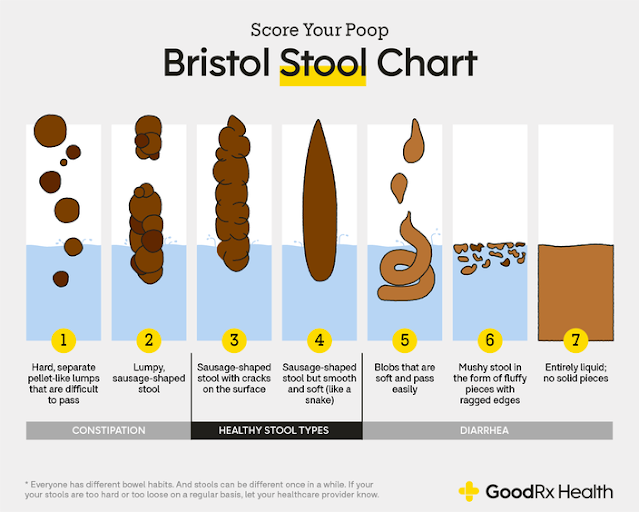Unravel the mysteries behind different poop colors and what they reveal about your well-being. Dive into a comprehensive guide that simplifies the language of your body's signals.
 |
| What Your Stool's Says About Your Health |
Introduction:
In the world of health indicators, the color of your stool might not be the first thing that comes to mind. Yet, it's a subtle messenger that holds valuable insights into your well-being. While the frequency of your bathroom visits is important, the color of your stool can tell a more intricate story. Let's explore this topic in depth while keeping it easy to grasp.
1. The Brown Standard:
Commonly, your stool exhibits various shades of brown. This ordinary hue originates from the breakdown of bilirubin, a product of old blood cells, and bile, a digestive aid produced by your liver to process fats.
2. The Green Surprise:
Occasionally, you might notice green stools. This phenomenon typically results from food racing through your digestive system. The bile present in your stool hasn't had enough time to transition from green to the usual brown.
3. Food and Medicine Influences:
Your dietary choices and medications can exert an impact on the color of your stool. Consumption of foods like tomatoes, beets, or drinks with red dyes can render your stool red. Similarly, certain medications can have a similar effect. It's crucial to recollect your recent diet and medication intake before jumping to conclusions.
4. The Story Behind Yellow and Orange:
When your stool takes on a yellow or orange appearance, it might suggest issues with fat absorption. This scenario could be linked to conditions such as celiac disease, pancreatic disorders, or infections. Interestingly, in children, who often prefer orange and yellow vegetables, these colors might not indicate a problem at all.
5. Unveiling the Mystery of Black Stools:
The sight of black stools can be alarming, particularly if they appear sticky. This might indicate internal bleeding within your stomach. This bleeding could be caused by conditions such as ulcers or bleeding lumps. Additionally, certain medications and pills can turn your stool black.
6. The Paleness of White Stools:
When your stool appears pale or nearly white, it could signify insufficient bile reaching your digestive tract. This might point to potential issues with your liver, bile ducts, or pancreas. Interestingly, certain medical tests involving substances like barium, used for X-rays, can also yield pale-colored stools.
Trending Now: NASCAR at Daytona Summer 2023...
7. Deciphering Red Poop:
Red-colored stools warrant attention as they often indicate bleeding from the lower digestive tract. While the immediate assumption might be related to diet, it's crucial to consider other factors. Hemorrhoids, gastrointestinal conditions, or bleeding polyps could be the underlying causes. If you haven't consumed red foods or dyes recently, it's advisable to consult a healthcare professional, especially if accompanied by other symptoms.
Conclusion:
While discussing the color of your stool might feel uncomfortable, it's undeniably an important conversation. The array of colors your stool can exhibit provides valuable insights into your body's inner workings. Some color changes are harmless, while others might require medical attention. Embracing this knowledge empowers you to be in tune with your body's cues, supporting your overall well-being.
Post a Comment